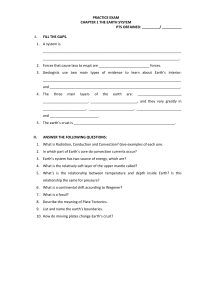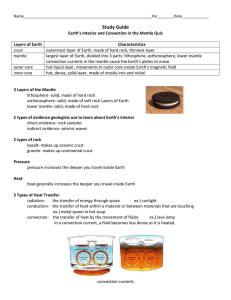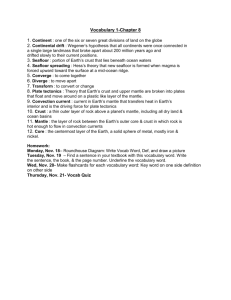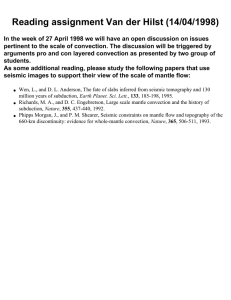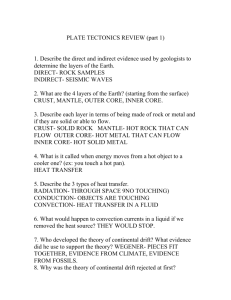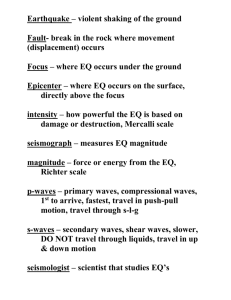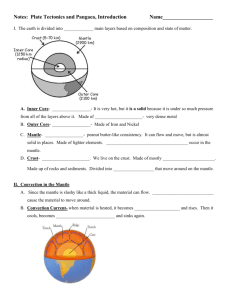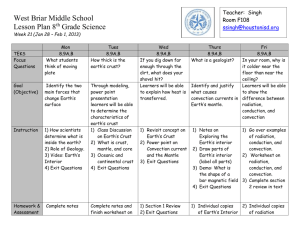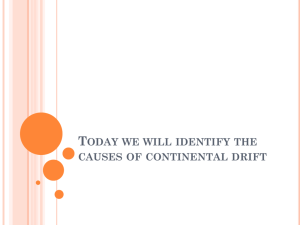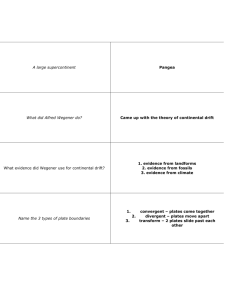Heat and Plate Tectonics - Western Reserve Public Media
advertisement
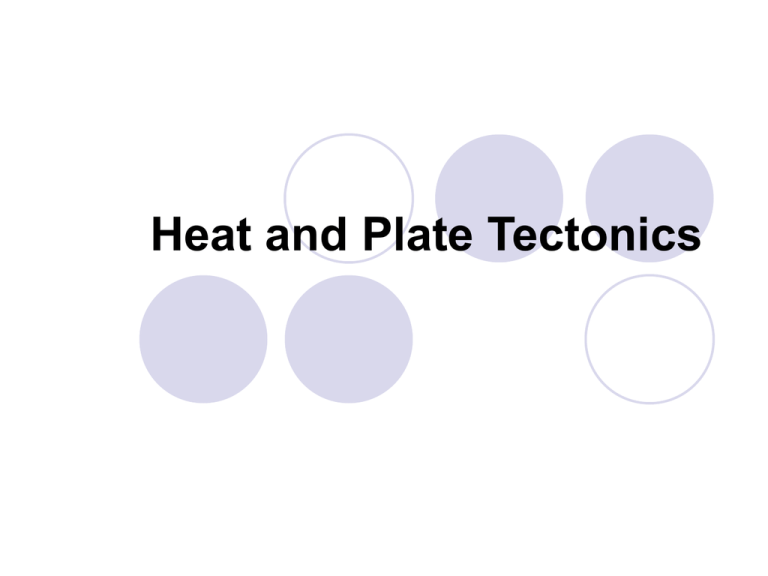
Heat and Plate Tectonics Inside the Earth The part of Earth we live on is called the crust. This is a very tiny layer on the planet. Beneath that is the mantle. This is a semiliquid layer that is very hot. Temperature range from 5000 F to 7,0000 F, depending how deep you are. At the center is the core. This is even hotter, but is a solid due to the immense pressure on it. Earth Where Did All the Heat Come From? Most of it came from the formation of the planet. When Earth formed, it was a molten ball of rock. It cooled from the outside in. Think of a recently hard -boiled egg. The outside gets cool relatively quickly, but the inside stays warm for a long time because it is harder to transfer the heat out. Earth The earth is a big rock: 5,973,600,000,000,000,000,000,000 kg How long does it take the center of something that big to cool down? It has been cooling for 4.7 billion years and is not cool yet! Radiation There is also another factor heating the interior of the crust. Radioactive elements, like uranium, are in the Earth. These elements are releasing radiation which is warming the interior of the Earth. Heat in the Mantle What does this heat do? It causes objects to expand, changing their density, causing them to rise. Other objects fill in the spaces they just left. This is a convection current. Convection and Radiation A quick look at convection on the surface The sun radiates heat in the form of light toward the planet. This heats the surface, which conducts heat to the air touching it. The hot air expands, and begins to rise Cooler air fills the void the hot air left. The air begins to circulate. The circulation is convection, light (energy) is radiation. Earth Radiant Energy Radiation can be visible light, but can also be a large spectrum of things such as … Plate Tectonics The theory that explains why geologic phenomena such as earthquakes, volcanoes and continental drift occur in terms of the movement of the earth’s lithospheric plates. On top of the mantle are several plates of rock that the crust sits on. Energy The top part of the mantle is called the aesthenosphere. The plates sit on this layer and move around slightly due to the convection currents. The energy from an earthquake or a volcanic eruption is simply energy from the mantle that is being transferred.
